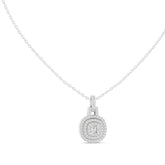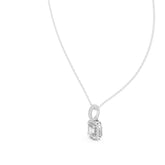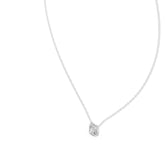Quality Control
The final quality control process is an essential step in jewelry manufacturing to ensure that each piece meets the required standards of craftsmanship, appearance, and functionality. It involves thorough inspections and assessments to identify and address any issues or discrepancies before the jewelry pieces are ready for distribution or sale. Here's an explanation of the typical final quality control process:
-
Visual Inspection: Each jewelry piece is visually examined by trained quality control personnel. They inspect the overall appearance, design details, and finishes of the piece to ensure that it matches the intended design and meets the desired aesthetic standards. This includes checking for any visible defects, scratches, or imperfections on the metal surfaces.
-
Stone Setting Evaluation: If the jewelry piece includes gemstones, the quality control personnel carefully examine the stone settings. They ensure that the stones are securely held in place, properly aligned, and symmetrical. The stones should be free from damage, chips, or cracks, and their color and clarity should align with the specified standards.
-
Functional Assessment: The functionality of the jewelry piece is assessed during the quality control process. For items like bracelets, necklaces, or earrings, mechanisms such as clasps, hinges, or ear posts are examined to ensure they operate smoothly and securely. Movement and flexibility of the piece are assessed, ensuring that it functions as intended without any hindrances or defects.
-
Metal Purity Verification: If the jewelry piece is made from precious metals such as gold or silver, its purity is verified. This may involve conducting tests or using specialized tools to ensure that the metal meets the specified purity standards, such as 24K gold or .925 sterling silver.
-
Finishing Evaluation: The final finish of the jewelry piece is assessed to ensure that it meets the desired level of polish, shine, and surface smoothness. Any remaining imperfections, marks, or blemishes are identified, and appropriate measures are taken to address them, such as additional polishing or refinishing.
-
Measurements and Sizing Check: The jewelry piece is measured to verify that it conforms to the specified dimensions and sizing requirements. This includes assessing the length, width, and thickness of the piece to ensure it meets the intended design and fits within the established standards.
-
Packaging and Presentation: The quality control personnel also evaluate the packaging and presentation of the jewelry piece. They ensure that it is appropriately packaged, labeled, and presented according to the established guidelines and branding standards. This includes checking for any defects or damages to the packaging that may affect the overall presentation of the product.
-
Documentation and Record-Keeping: Throughout the quality control process, detailed records and documentation are maintained, including information on inspections, assessments, and any necessary corrective actions taken. These records help track the quality of each piece, identify trends or recurring issues, and facilitate continuous improvement efforts.
By conducting rigorous quality control checks, manufacturers can ensure that their jewelry pieces meet the highest standards of craftsmanship, appearance, and functionality. It helps build customer trust, enhances brand reputation, and ensures that only high-quality products reach the market.






